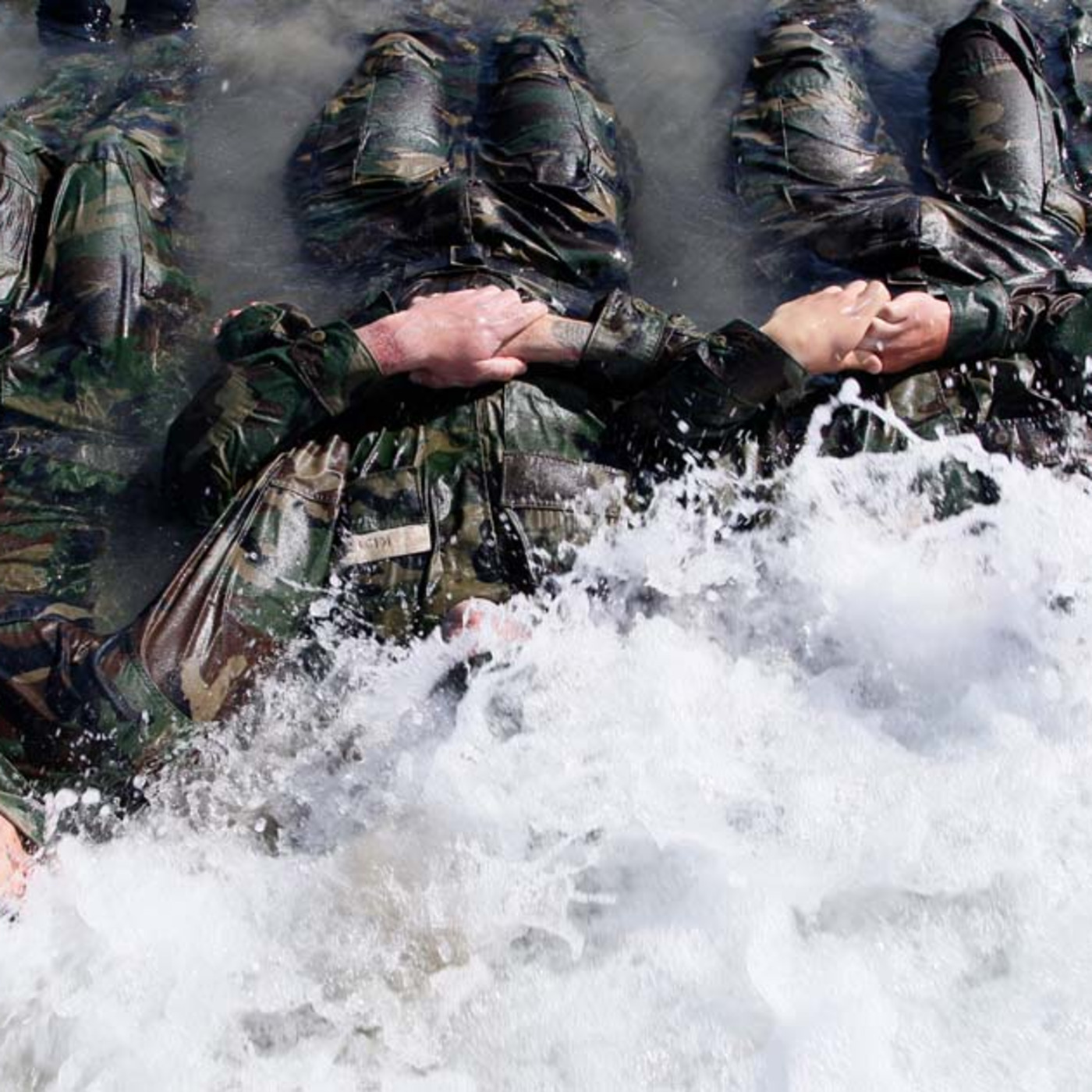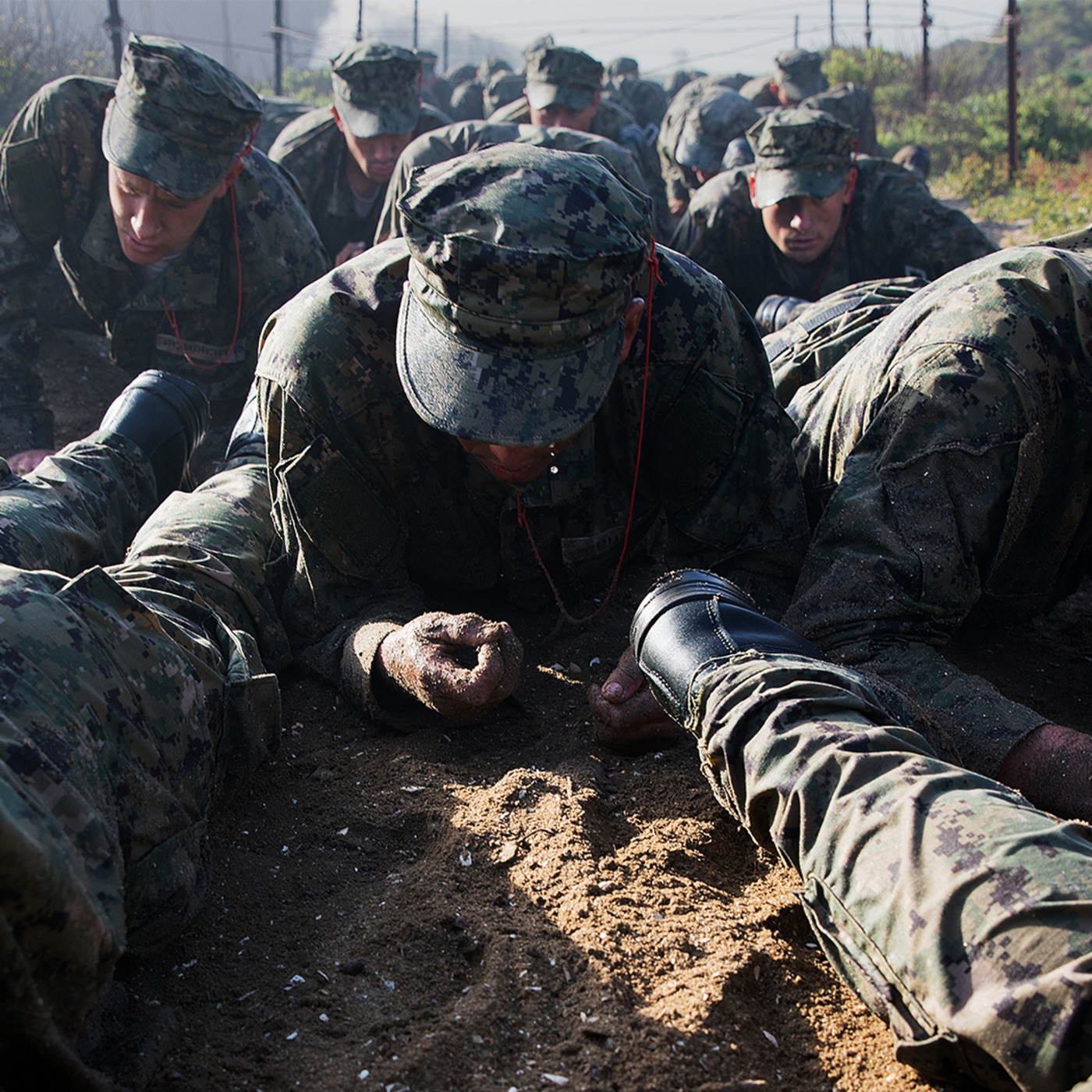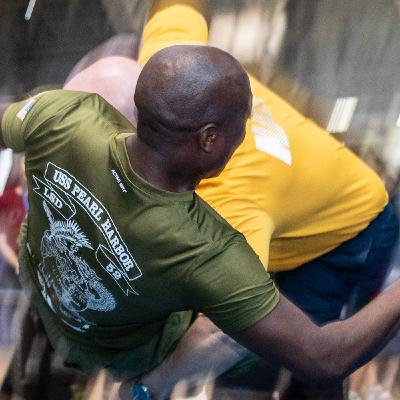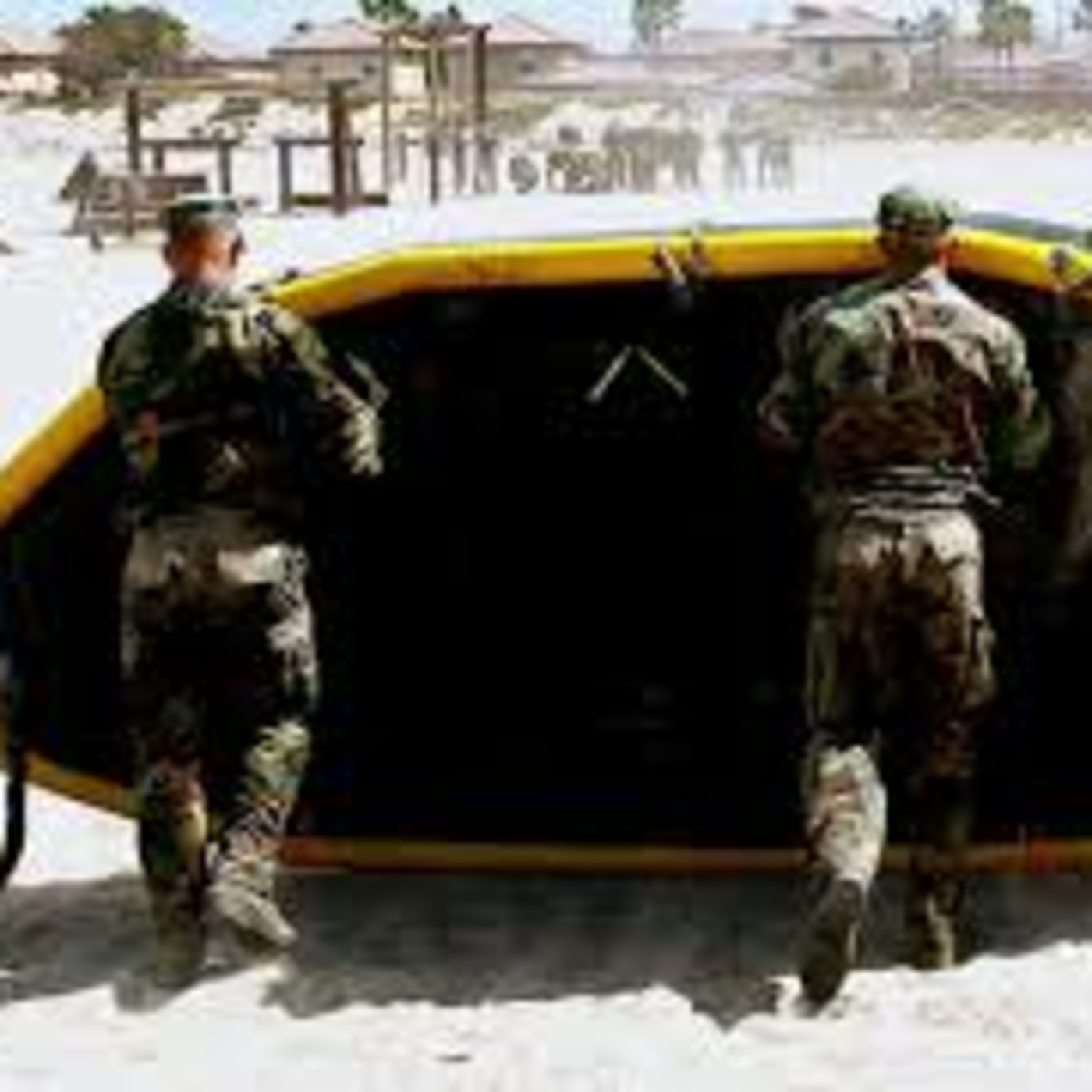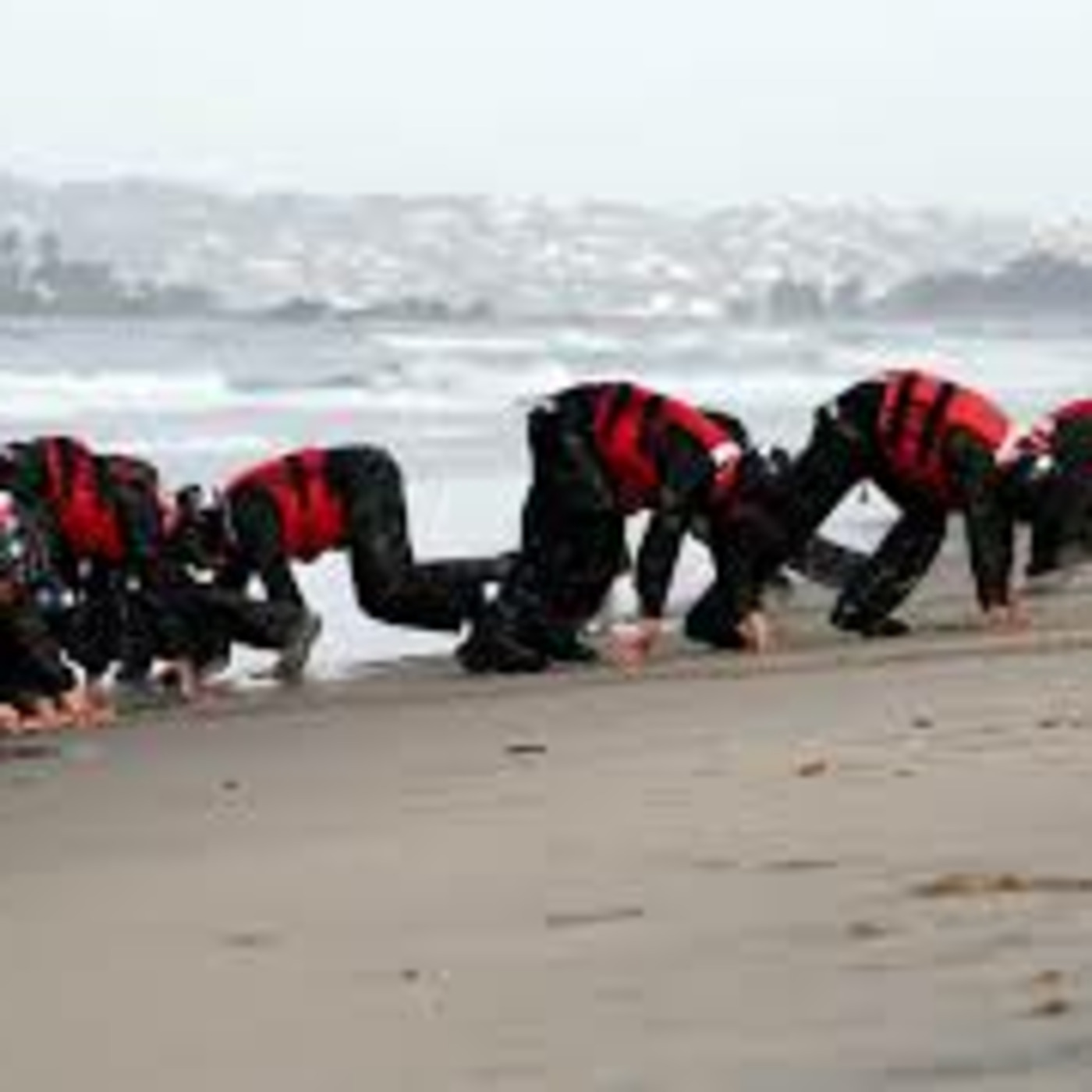Episode 43: PODCAST: Episode 43 | What is 'SOAS'? | SEALSWCC.COM
Description
Introduction: Life is about constant evolution. Always better today than we were yesterday.
Scott: Hello everyone and welcome to another episode of The Only Easy Day Was Yesterday.
I’m your host Scott Williams and today I have with me Andrew Dow who is going to school us on the topic of, what we call around here, SOAS. What is SOAS, Andrew?
Andrew: Thanks Scott. So, thanks for having me. It is always great to come by and discuss with you all. Again, my name is Andrew Dow. I am a retired SEAL Officer. I have been the SOAS, which stands for SEAL Officer Assessment and Selection, I am the program manager for this program, and I've been doing it since 2016 and it's come a long way.
Scott: Yeah, tell me a little bit about when SOAS began and why it's required if you want to become a SEAL Officer?
Andrew: So SOAS was instilled I think in 2014 and in 2014 is when it started building itself into what it is today. So, 2014 to 2016 was candidates from the Naval Academy, Officer Candidate School, ROTC would get an invitation to come to SOAS and basically train for 2 to 3 weeks and from that they would get some kind of score that would follow them with their application which would later determine if they become selected for SEAL Officer and in turn go to BUD/S
Probably around 2017 is when we really started seeing a change in the SOAS format and inviting every accession source cause SOAS…. Well let’s just talk about SOAS first before I dive into the timeline where we are.
Scott: So, what is SOAS?
Andrew: The SEAL Officer Assessment Selection is designed to assess aspiring SEAL candidate officers who want to go to BUD/S and become SEAL Officers you get Naval Academy candidates. You get Naval Academy candidates. You get ROTC candidates. You get Officer Community OCS candidates. You get inter-service transfers which is your Marine Corps officers, your Army officers, to Air Force officers. You get inter-service academy transfers which is your WestPoints, your Air Force academies, Coast Guard academies. You also get lateral transfer, lateral transfers being an individual that's already active duty and is in the surface Navy. They could be... we mostly see lateral transfers being surface warfare officers that do their time in the fleet and decide hey I want to submit an application to become a SEAL officer.
Scott: That could be an Intel Officer. That could be Aviation Officer, Supply Officer.
Andrew: It can be. We do not see a lot of pilots or back seaters or Weapon Officers or Pilots. I haven't seen many Intel Officers come through. It’s mostly just surface warfare. Because Submariner Sub Officers, they have so much schooling they have to go through... unless they undesignated ... they won't apply. Because in order to apply for a lateral transfer you have to have your warfare insignia right, your Surface Warfare pin. If you are a pilot, you have to have your pin for you can even apply but that timeline is just so far that we only ever see SWOS. SWOS, lateral transfers and they we will also see OCS (Officer Candidate School), active-duty enlisted sailors who want to become SEAL Officers. That’s a very, and I tell a lot of candidates this, that is a very difficult course to go. And it’s one of the … the reason it’s most difficult is your competing against active-duty SEAL enlisted who want to become officers. These individuals don't have to go to SOAS, they don't have to go to BUD/S. So those individuals, it’s an uphill battle to even go to SOAS and then from there to even be selected to go to BUD/S.
Scott: Talk a little bit about who has to go to SOAS, why its required. Who doesn’t have to go to SOAS?
Andrew: So, guys and gals who don’t have to go to SOAS are those who are already trident wearers, those who are active duty or reserve who are SEALs already, don’t have to attend SOAS.
Scott: Enlisted?
Andrew: Enlisted, yes.
SOAS is strictly for candidates who want to become SEAL Officers. The enlisted SEALs that apply to become SEAL officers, they submit an application like everyone else to the SEAL Officer Community Manager and then their application will go right to the selection panel in September. That is run by the Admiral, two-star Admiral, who will determine who gets the selection to BUD/S. So, everyone who goes to SOAS, who makes it through SOAS, their application and SOAS score will go to the selection panel which happens after SOAS, as well as any others that don’t have to attend SOAS -- those SEALs, and it will be determined who will go to BUD/S from there.
Scott: The only enlisted applicants for SOAS are going to be trident wearers?
Andrew: Yes, trident wearers. But it’s also other ratings in the Navy right. You can have your machinist’s mates, your ITs, your ETs, all of them. They do have to go to SOAS, but the SEALs do not. Another thing that may not be known is the SBs or Special (Warfare) Boat (Operator) crewman, or SWCCs, have to go to SOAS actually. Last year we had SBs that had the option to attend SOAS. We gave them the option because they have already been through BCT, they already have their warfare insignia for SWCC, but we said that it was in their best interest to go so they have a score because they are running against trident wearers who have already been through BUD/S, right. These individuals would still have to go to BUD/S. So SWCC also attended SOAS. So, any active duty enlisted from any branch right. So, in the past we’ve had Marine Corps enlisted attend SOAS. We’ve had Coast Guard enlisted attend SOAS but that’s another avenue and there is a lot more than, oh can I just apply. No, you have to get your brand of service approval before you can attend.
Scott: Right because there is no interservice transfer for enlisted into the Navy unless it's with the follow on going to OCS to become an officer.
Andrew: That is a very challenging core so listen to an example. You have a Marine Corps sergeant that did his or her time and wants to become a SEAL officer. They have to one get their chain of command approval from the Marines, from whatever community they are in the Marine Corps. The Marine community has to be willing to give up this individual to cross over to the Navy right. They will attend SOAS as a Marine Corps infantry man or supply corps, whatever rate (MOS) they have. They will attend SOAS as a Marine but when they graduate SOAS or when they finish SOAS and they go to selection panel, if they are chosen, they would then have to attend OCS Navy. They would then have to actually change services from Marine to Navy and then go to OCS. Then after they complete and graduate OCS they would attend BUD/S. But there are a lot of approvals that have to be done and it has to be willing of that service whether its Marine Corps, Coast Guard, Army, Air Force to allow them to go and change from their community to Navy.
Scott: Yeah, I would imagine you don’t see a lot of those other service member enlisted come through more interservice transfers for at the officer level the O-1s the O-2.
Andrew: No. So, in the past I’ve seen two enlisted and they were from the Marine Corps. Officers, you will get them from Army, Navy, mostly Marines Corps is the officers you see that go from their community and try to go SEALs. Army has been a little bit; I don’t think we’ve had an Army in the past.
Scott: What about Coast Guard?
Andrew: Coast Guard. I haven’t seen a Coast Guard Officer. There actually was one Coast Guard enlisted that came to SOAS. They weren't selected right so they would just go back to Coast Guard. But there hasn't been a Coast Guard enlisted, officer or enlisted, that's been selected to go to BUD/S through SOAS. From SOAS to the selection panel to BUD/S.
Scott: Now I’m about to go down a little bit of a rabbit hole but the question occurred to me, what if you had an interservice transfer officer from let’s say the Army. An Army second lieutenant or an Army first lieutenant that comes to SOAS, goes through all of SOAS and ultimately doesn't get selected by the board. Does that officer candidate then return to the Army in their former capacity or now do they have to go to the Navy as a general army officer?
Andrew: What happens if they aren’t selected, they will go back to their community. If they are selected that’s when the paperwork gets handled and then they would go from green to blue, or better term Army to Navy or Marine Corps to Navy. That happens after they're selected so if they're not selected, they will just go back to their unit and continue on with their career in that service they are currently in.
Scott: Ok. So, let’s talk a little bit about when and where SOAS is conducted. Is this an annual thing? Is it a season? What is it?
Andrew: So SOAS happens during the summer. SOAS is broken down into 3 blocks, each block is 2 weeks long. SOAS blocks are usually 2 weeks in June, 2 weeks in July and 2 weeks in August. We see candidates come from all over the U.S., from every accession source and they come and attend SOAS in Coronado, California at NAB, Naval Amphibious Base Coronado. And they’ll be doing SOAS where BUD/S is held. They’ll see BUD/S students running around, they will be doing evolutions very similar to BUD/S, but it happens in Coronado three times a year: 2 weeks during June, July, and August. They will attend. So, it happens annually.
Scott: Can you give me just a brief overview without getting too far into the details about the SOAS training schedule. Like what happens in that first week and what happens in that second week?
Andrew: Ok. SOAS is 2 weeks long. First week is assessment week. Second week is interview week. Candidates will show up on a Saturday, get their gear issues, check in and fill out any paperwork that is needed for them to attend SOAS

